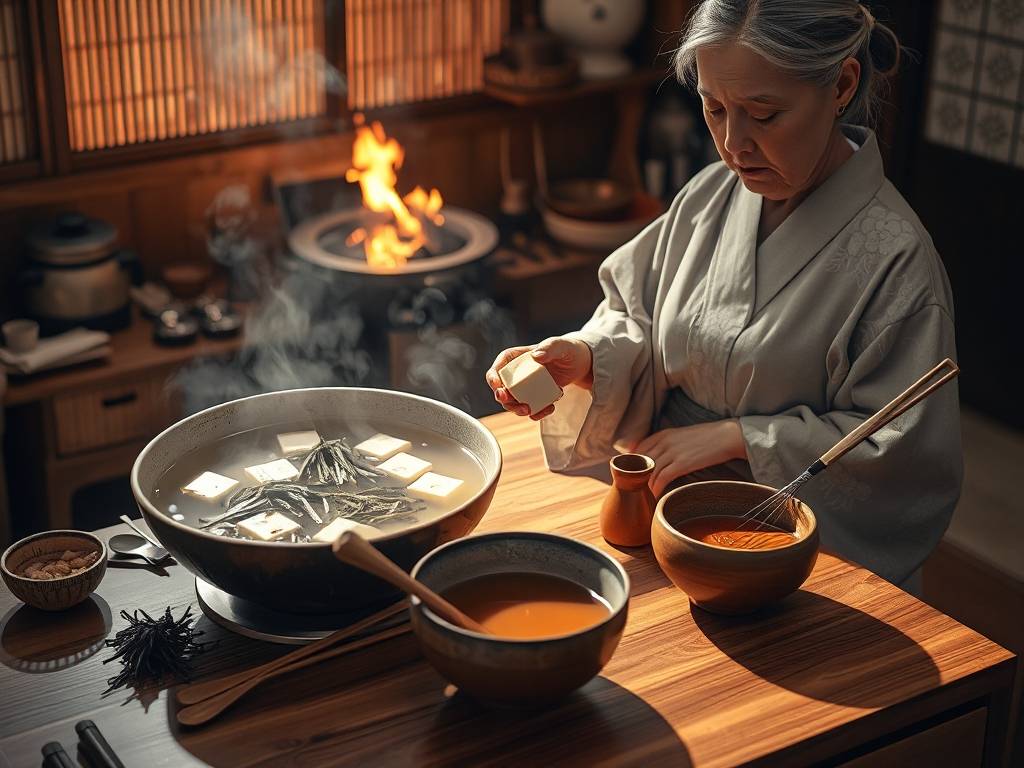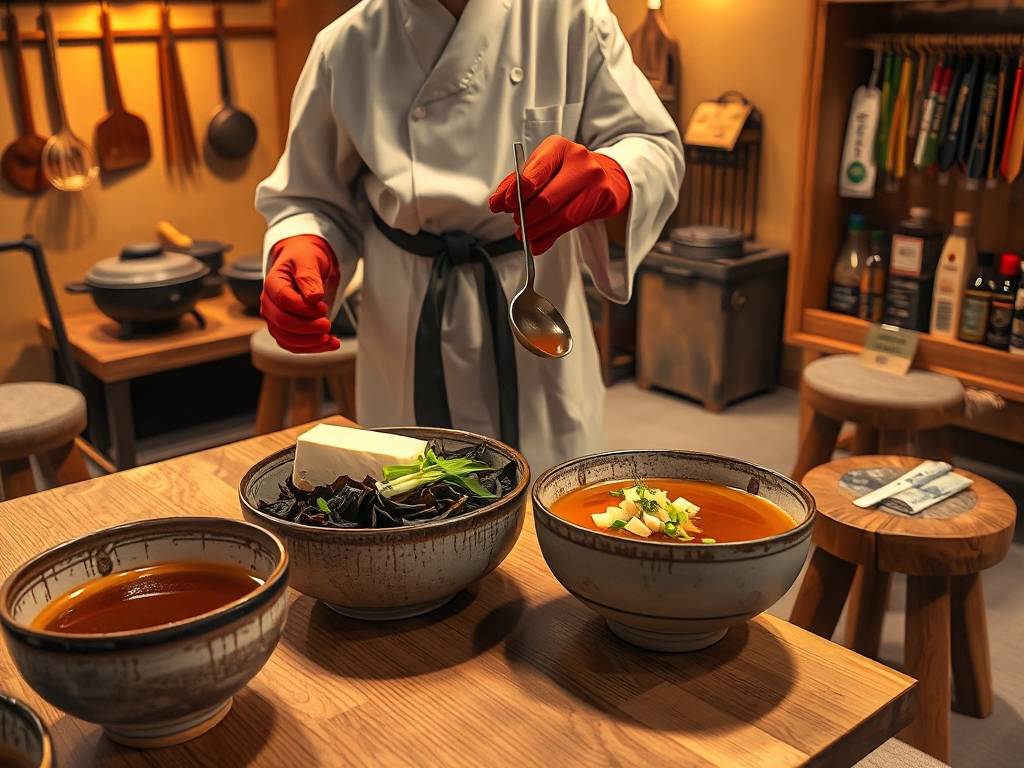The Art of Crafting Authentic Miso Soup: A Journey Through Japanese Tradition
Miso soup, known as misoshiru in Japanese, is far more than just a simple broth—it's a cornerstone of Japanese cuisine, a comforting elixir that has graced breakfast tables and restaurant menus for centuries. This humble yet profound dish embodies the essence of umami, the fifth taste that defines so much of Japanese cooking. While seemingly straightforward, creating an authentic miso soup with tofu and seaweed requires understanding its components, particularly the foundational dashi broth. Let's explore the traditional methods and cultural significance behind this iconic dish.
Understanding the Components
At its core, miso soup consists of three essential elements: dashi (the stock), miso paste (the fermented seasoning), and wakame (seaweed) with tofu as the primary additions. Each component contributes distinct flavors and textures that harmonize to create the final masterpiece.
The Foundation: Dashi Broth
Dashi is the soul of Japanese cooking, and its quality determines the success of your miso soup. Traditional dashi comes in several varieties, but the most common for miso soup is awase dashi, a combination of two key ingredients:

Kombu (Dried Kelp) This edible seaweed provides the baseline umami flavor. High-quality kombu should have a white powdery substance on its surface—this is natural glutamate that contributes to the broth's richness. Never wash kombu; instead, gently wipe it with a damp cloth to preserve these flavorful compounds.
Katsuobushi (Bonito Flakes) These paper-thin shavings of fermented, smoked, and dried skipjack tuna add depth and complexity to the broth. The combination of kombu's gentle umami with katsuobushi's smoky, fishy notes creates a balanced foundation that enhances rather than overpowers the miso.
Alternative dashi variations include:
- Niboshi dashi (made with dried sardines)
- Shiitake dashi (vegetarian option using dried mushrooms)
- Awase dashi (kombu and katsuobushi combination)
The Heart: Miso Paste
Miso, a fermented paste made from soybeans, salt, and koji (a fermentation culture), comes in several varieties that dramatically affect the soup's character:
White Miso (Shiro Miso) Fermented for shorter periods (weeks to months), this mild, slightly sweet miso works well in delicate soups and summer preparations.
Red Miso (Aka Miso) Aged longer (sometimes years), this robust, salty miso creates heartier soups ideal for colder months.
Mixed Miso (Awase Miso) Many cooks blend different miso varieties to achieve a balanced flavor profile that isn't too strong or too mild.
The Additions: Tofu and Wakame
Tofu Silken (kinugoshi) tofu is traditionally used for miso soup because of its delicate texture that complements rather than dominates the broth. The tofu should be cut into small cubes that can be easily eaten with chopsticks.
Wakame This edible seaweed rehydrates beautifully in the hot broth, providing a slightly slippery texture and oceanic flavor that pairs perfectly with the miso. Wakame should be added dried and will expand considerably during cooking.
Step-by-Step Preparation
Crafting the Dashi Broth
-
Prepare the Kombu: Gently wipe a 4-inch piece of kombu with a damp cloth. Place it in a pot with 4 cups of cold water and let it soak for 30 minutes.
-
Heat Gently: Place the pot over medium-low heat. Just before the water reaches a boil (when small bubbles appear at the edges), remove the kombu. This prevents the broth from becoming bitter.
-
Add Katsuobushi: Bring the liquid to a full boil, then turn off the heat. Immediately add 1 cup of loosely packed katsuobushi flakes. Let them steep for 3-5 minutes until they sink to the bottom.
-
Strain: Line a fine-mesh strainer with cheesecloth and strain the broth into a clean bowl, pressing gently on the flakes to extract maximum flavor. Your dashi is now ready.
Assembling the Soup
-
Prepare Ingredients: Cut ½ block of silken tofu into ½-inch cubes. Measure 2 tablespoons of dried wakame and set aside.
-
Heat Dashi: Return the dashi to the pot and heat it over medium flame until it's hot but not boiling.
-
Dissolve Miso: Place 3-4 tablespoons of miso paste in a small bowl. Ladle some hot dashi into the bowl and whisk until the miso is completely dissolved. This technique prevents lumpy soup.
-
Combine Elements: Reduce heat to low and add the dissolved miso mixture back to the pot. Never boil miso once it's added, as high heat destroys its delicate enzymes and alters the flavor.
-
Add Tofu and Wakame: Gently stir in the tofu cubes and dried wakame. Heat for 1-2 minutes until the wakame has rehydrated and the tofu is warmed through.
-
Serve Immediately: Ladle the soup into bowls and garnish with thinly sliced scallions if desired.

Cultural Significance and Variations
Miso soup transcends mere sustenance in Japanese culture. It represents comfort, tradition, and the changing seasons. Different regions of Japan have developed their own variations based on locally available ingredients:
- In northern Hokkaido, you might find miso soup with salmon and potatoes
- Coastal regions often add clams or other shellfish
- Mountain areas might feature wild mushrooms or root vegetables
The traditional Japanese breakfast almost always includes miso soup, rice, and grilled fish—a balanced meal that provides sustained energy throughout the morning. This combination reflects the Japanese principle of ichiju-sansai (one soup, three dishes), which emphasizes variety and nutritional balance.
Tips for Perfection
- Quality Matters: Invest in good-quality miso and dashi ingredients. The difference between mass-produced and artisanal products is noticeable.
- Temperature Control: Never boil miso once it's added to preserve its probiotic benefits and delicate flavor.
- Customization: Feel free to add other ingredients like sliced mushrooms, spinach, or daikon radish.
- Storage: Keep miso refrigerated and use within the manufacturer's recommended time frame for optimal flavor.
- Balance: Taste as you go. The saltiness of miso varies between brands, so adjust quantities accordingly.
Health Benefits
Beyond its delightful taste, miso soup offers numerous health advantages. The fermentation process creates probiotics that support gut health, while the combination of seaweed and tofu provides essential minerals, protein, and isoflavones. Studies have suggested that regular consumption of miso soup may contribute to reduced risk of certain cancers and improved cardiovascular health.
Conclusion
Mastering authentic miso soup is a rewarding culinary journey that connects you with centuries of Japanese tradition. While the process requires attention to detail, the result is a deeply satisfying bowl of comfort that nourishes both body and spirit. Remember that the best miso soup comes not just from following measurements, but from understanding the balance of flavors and respecting the ingredients. With practice, you'll develop an intuition for creating this simple yet profound dish that has comforted generations of Japanese families. Whether enjoyed as part of a traditional breakfast or as a light meal, properly prepared miso soup represents the beautiful simplicity at the heart of Japanese culinary philosophy.






发表评论